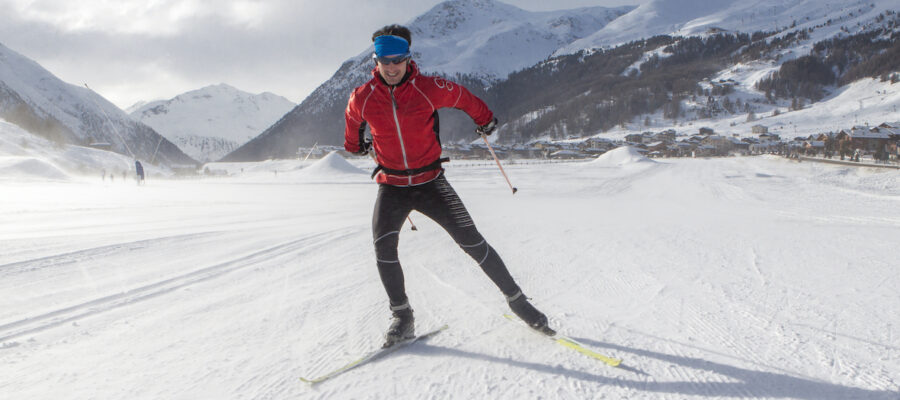Skate skiing is characterized by its dynamic, side-to-side motion, and it offers a different set of techniques compared to classic skiing. Let’s explore three essential skate skiing techniques: V-skate, offset skate, and one-skate.
1. V-Skate
The V-skate, also known as the parallel skate, is a fundamental skate skiing technique used for efficient gliding on flat to gently rolling terrain. It resembles the motion of ice skating and allows skiers to maintain a steady pace with minimal effort.
Here’s how to perform the V-skate:
- Starting Position: Begin with a balanced and slightly forward-leaning posture. Your weight should be centered over one ski while the other ski is lifted slightly off the snow.
- Push and Glide: Push off the inside edge of one ski while simultaneously transferring your weight to the other ski. Your arms should move in opposition to your legs for balance and propulsion.
- Return to Center: As your pushing ski glides behind you, return it to the starting position next to the stationary ski. Your weight should now be centered over the new leading ski.
- Alternate Sides: Continue this motion, alternating sides with each stride. Maintain a fluid rhythm and avoid excessive side-to-side movement.
The V-skate is ideal for maintaining speed on flat terrain and is the foundation of skate skiing. It allows for a smooth and efficient glide, making it a great technique for beginners to master.
2. Offset Skate
Offset skating, also known as the 2-skate or open-field skate, is a versatile technique used for climbing moderate inclines and navigating rolling terrain. It involves a staggered arm and leg motion that maximizes power and stability.
Here’s how to execute the offset skate:
- Starting Position: Begin with a balanced stance, slightly forward-leaning, and your weight over one ski. Hold your ski poles with both hands close to the grips.
- Push and Glide: Push off the inside edge of one ski while simultaneously planting one pole forward and the other pole back. Your arms should move in opposition to your legs, creating a staggered motion.
- Weight Transfer: As you push off and plant your poles, transfer your weight to the ski that’s pushing off and gliding forward.
- Alternate Sides: Repeat the motion, alternating sides with each stride. Coordinate your arm and leg movements to create a rhythmic and powerful stride.
Offset skating is a valuable technique for climbing hills while maintaining momentum. It’s a versatile skill that allows you to conquer various terrains with efficiency and control.
3. One-Skate
The one-skate, also known as the tuck skate, is a high-speed skate skiing technique used for descending hills and accelerating on flat terrain. It involves transferring most of your weight to one ski and minimizing drag to achieve maximum speed.
Here’s how to perform the one-skate:
- Starting Position: Begin with a balanced stance and slightly forward-leaning posture. Your weight should be centered over one ski while the other ski is lifted slightly off the snow.
- Push and Glide: Push off the inside edge of the gliding ski while extending your leg fully. Keep the lifted ski close to the gliding ski to minimize drag.
- Maintain Balance: As you push off and glide, maintain your balance over the gliding ski. Your arms should remain relaxed and slightly bent.
- Alternate Sides: To maintain speed and control, alternate sides with each stride. Use your poles for balance and stability.
The one-skate is a technique for advanced skiers, as it requires precise control and balance at high speeds. It’s particularly useful for accelerating on flat sections and descending hills with confidence.
Skate skiing techniques, including the V-skate, offset skate, and one-skate, are the keys to unlocking the exhilarating potential of this dynamic style of skiing.
Each technique offers unique advantages for different terrains and conditions, allowing you to glide with grace and speed through winter landscapes. As you practice and master these techniques, you’ll discover the thrill and satisfaction of skate skiing at its finest.

